This morning, the sky was the clearest it had been while I'd been in McMurdo. The wind had died down, the snow had stopped falling, a perfect day to fly out! So, at 7:30 the IceCube group and I met at the "bag drag" building where we had taken our luggage the night before, hopped on a transport van to the runway, and boarded a C-130 out of McMurdo. This is a smaller cousin of the C-17 that brought us to McMurdo in the first place. Christchurch-McMurdo on a C-17 took about 5 hours; on a C-130 it would have taken 8 hours. Fortunately, the South Pole is closer so the trip, even on a C-130, only takes about 3 hours. 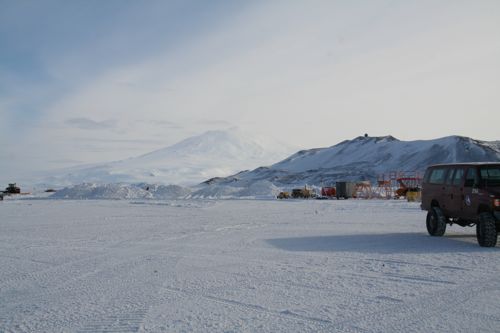
As before, the flight was generally uneventful, as you would generally prefer flights to be. As time wore on, it gradually became colder in the cargo/passenger compartment, so I wore my Big Red Parka instead of merely carrying it on my lap. As we crossed the continent, a few barren peaks poked up out of the flat expanse of bleach-white, only to return to a featureless tabula rasa of ice.
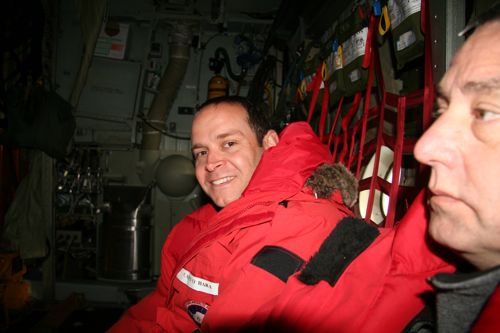
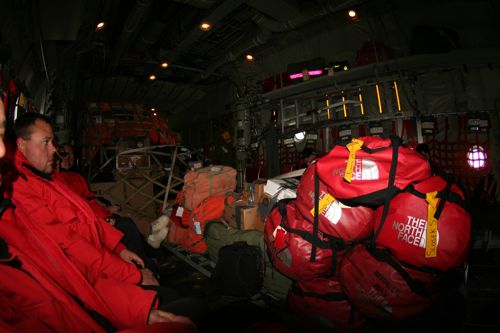
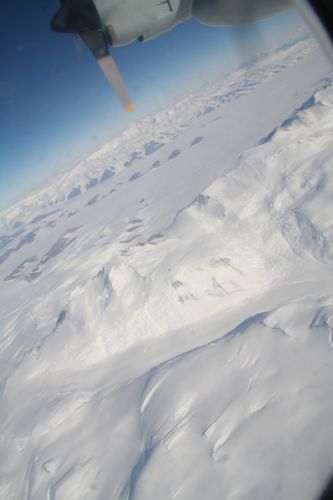
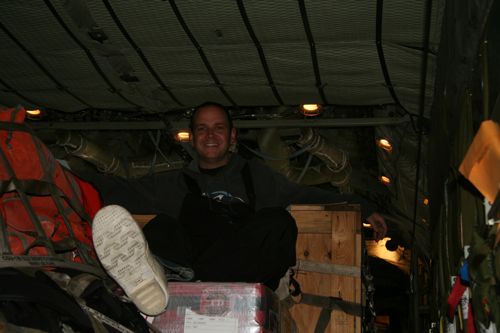
The plane touched down on skis and coasted in towards the station; as we deplaned I could feel my nose hairs freeze with each intake of breath. We hurried in but not before a pause to take in the stark, barren beauty of the polar landscape. 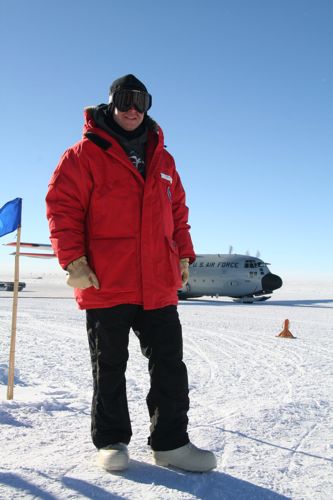
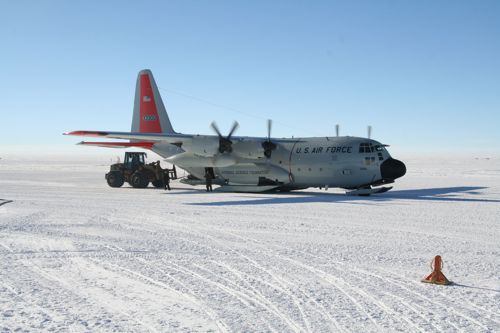
<img class="standalone-image" src="/files/members/casey-ohara/images/img9551.jpg" alt="View of the landing strip, aka Ski Way" title="Taken from the entrance to the South Pole Station (SPS), this view looks off in the direction of 90 degrees west longitude." width="500" height="333" />
Inside, I got the thrilling orientation video and my room assignment - in the station itself, rather than the Jamesway tents out in Summer Camp. Though my room is tiny, it is much better than the bunkhouse in McMurdo!
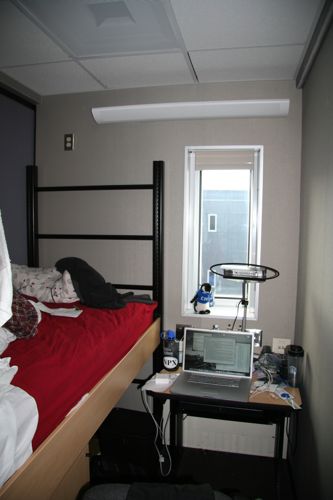
My first day at the Pole included meeting with various IceCube personnel, all of whom told me that I should take it easy the first few days until I acclimatized to the altitude, dryness, and chill. Even with the Diamox altitude sickness medicine, I still felt a mild headache; and even a simple task such as walking up the stair left me out of breath.
A few quick facts and then I'm out of here!
The South Pole is located at 90 degrees south latitude. Longitude doesn't denote a location down here, but it does tell you a direction - they use longitude numbers to help divide out various zones of activity such as the Clean Air Sector, Quiet Sector, Downwind Sector, and the ominous Dark Sector (which is where I will be working...) These sectors define certain scientific activities that occur in those places; more on those in a later post.
It was -37 Celsius today; that's about -34.6 Fahrenheit. To convert Celsius (C) to Fahrenheit (F), multiply C by 9/5ths and add 32. To convert F to C, reverse the calculation: take F - 32 and then multiply the result by 5/9. F = C(9/5) + 32; C = (F-32)5/9. Math people: find the temperature at which Celsius and Fahrenheit are identical! hint: I will probably experience that temperature while I am here.
More temperature facts: when the wind blows, it cools you off faster because convection carries away the warmer air next to your skin. That's why a summer breeze feels so nice. Not so nice when it's already 37 below! Humidity, on the other hand, makes you feel warmer because it keeps your sweat from evaporating, so your sweat can't cool you as quickly. Humidity at the South Pole is less than the Sahara Desert. So, double whammy!
The South Pole is 2836 meters above sea level; that's 9306 ft. But the atmosphere at the pole is thinner, so it seems like you're at an even higher altitude. Today's barometric pressure was 680 millibars, which equates to a "physiological" altitude of 10624 feet! Altitude sickness at these altitudes can create headaches, sleep apnea-like symptoms, nausea, and in severe cases, High Altitude Pulmonary Edema (HAPE, not pronounced "happy") in which your lungs fill with fluid, or High Altitude Cerebral Edema (HACE) in which fluid in your skull puts pressure on your brain. HAPE and HACE can kill you, and one person had to be evacuated out of here this year because he didn't take his Diamox and pushed himself too hard on those critical first few days.
Diamox, a medicine used to help prevent altitude sickness, has the unfortunate side effects of being a diuretic (look that one up, kids!) and making your extremities tingle - my fingers often feel as if they have fallen asleep. It also makes carbonated beverages taste terrible, or so I am told; I have not tested this one yet because they don't have soda machines in the cafeteria. But at least I won't die of HAPE.


Comments